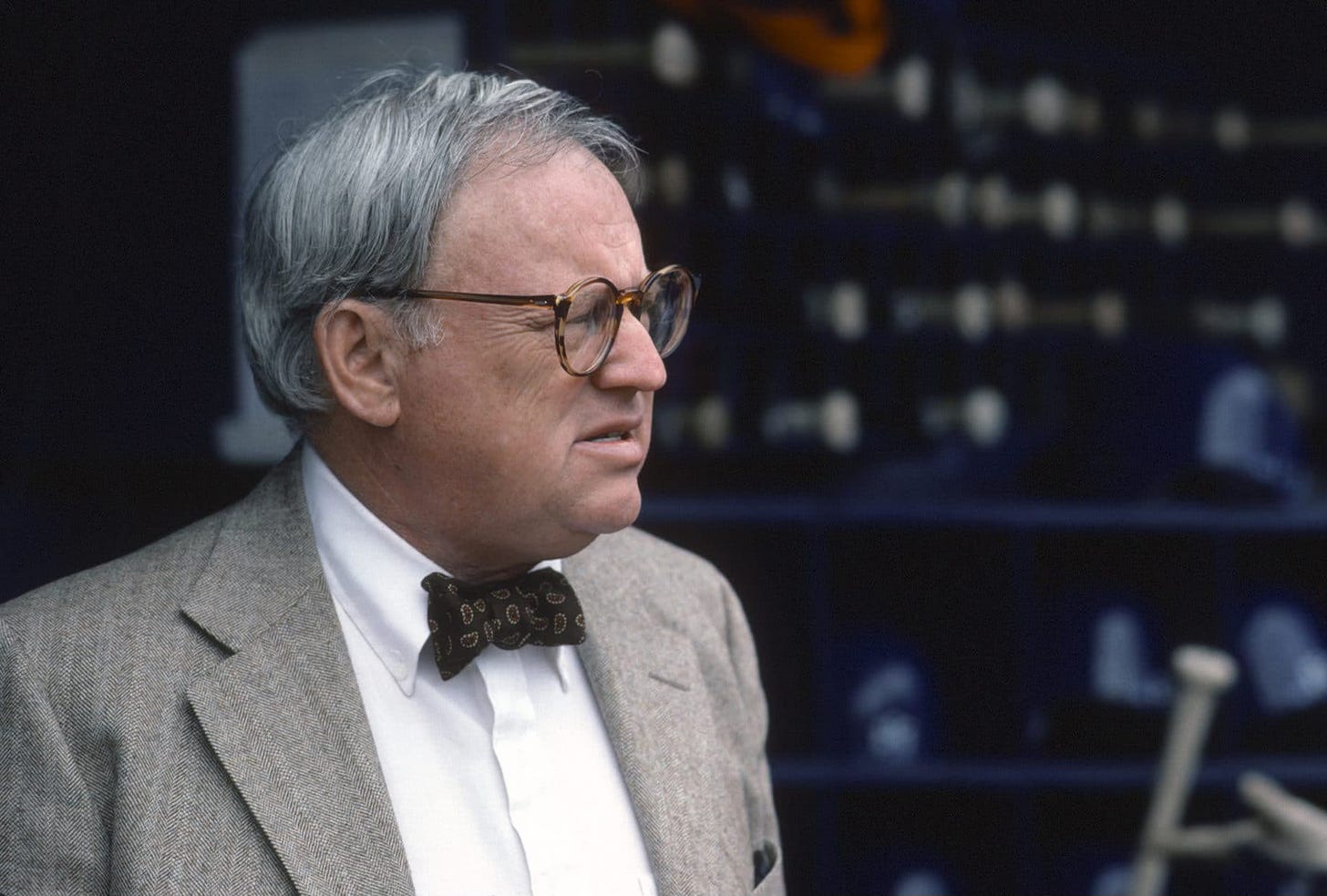The Bird Tapes Interview: Frank Cashen (Part 2)
He focuses on the early 1970s, when he broke up the Orioles' championship nucleus, trading away, among others, a player with whom he later partnered to win a World Series.
The era immediately after the Orioles won three straight American League pennants from 1969-71 usually receives little consideration as a major historical epoch. I suppose it’s understandable. They didn't play in the World Series and lost twice to the Oakland A’s in the American League Championship Series. Adjustment and transformation were constants as an aging, championship-caliber club gradually was broken up and a new guard gradually moved in.
But the Orioles were better than history credits them in those years.
In 1973, they won 97 games — as many as they’d won in 1966, a World Series-winning season — and battled the A’s to a final, decisive game in the ALCS. It took a shutout by Oakland’s Catfish Hunter, a future Hall of Famer, to eliminate them.
That team had the chops to win another World Series, just didn’t.
A year later, they won 91 games and another division title and took an early lead over the A’s in the ALCS. A pair of one-run losses eliminated them.
In Part 2 of his vintage interview from a quarter-century ago, available below to paid Bird Tapes subscribers, Frank Cashen focuses on the job he did as the Orioles’ top baseball decision-maker in those years. In Part 1, posted last week, he laughed at the idea that he was ready for the job after just seven years in the baseball industry. But he was ready; his wheeling and dealing helped keep the Orioles in contention while in transition.
His decision to trade Frank Robinson after the 1971 season was, in hindsight, a mistake. But the 97-win club in 1973 featured four Cashen trade acquisitions — designated hitter Tommy Davis, catcher Earl Williams and pitchers Doyle Alexander and Bob Reynolds— in important roles alongside young blood such as Don Baylor and Bob Grich, whom Cashen promoted after trading Robinson and Davey Johnson.
By 1975, they also had outfielder Ken Singleton and pitchers Mike Torrez and Ross Grimsley — more players Cashen had acquired in trades. They didn’t make the playoffs but won 90 games.
In Part 2, Cashen credits organizational institutions such as manager Earl Weaver, trainer Ralph Salvon, PR director Bob Brown and traveling secretary Phil Itzoe — all longtime employees — for providing a stable environment around the players and helping the club stay near the top of the American League despite the roster turnover. The Orioles were “like a family, Cashen says. That family knew how to win.
But Cashen was the one who made the deals and other moves that created the teams for Weaver to manage, and they were winning teams. Only eight times in their 70-year history have the Orioles won more games than they did in 1973.
Cashen was 74 years old and retired, very much at ease, when I spoke to him at his home on Maryland’s Eastern Shore on a sunlit fall afternoon in 1999. His recollections were vivid, his insights sharp.
In the long run, his years as a roster architect for the Orioles (1972-75) were a prelude to his years in the same role with the New York Mets. When he took what he’d learned in Baltimore and put it to use, the Mets won a World Series managed by Davey Johnson, the former Oriole whom Cashen had once traded out of Baltimore, proving the value of an old baseball adage — grudges are best forgotten.
Keep reading with a 7-day free trial
Subscribe to The Bird Tapes to keep reading this post and get 7 days of free access to the full post archives.





